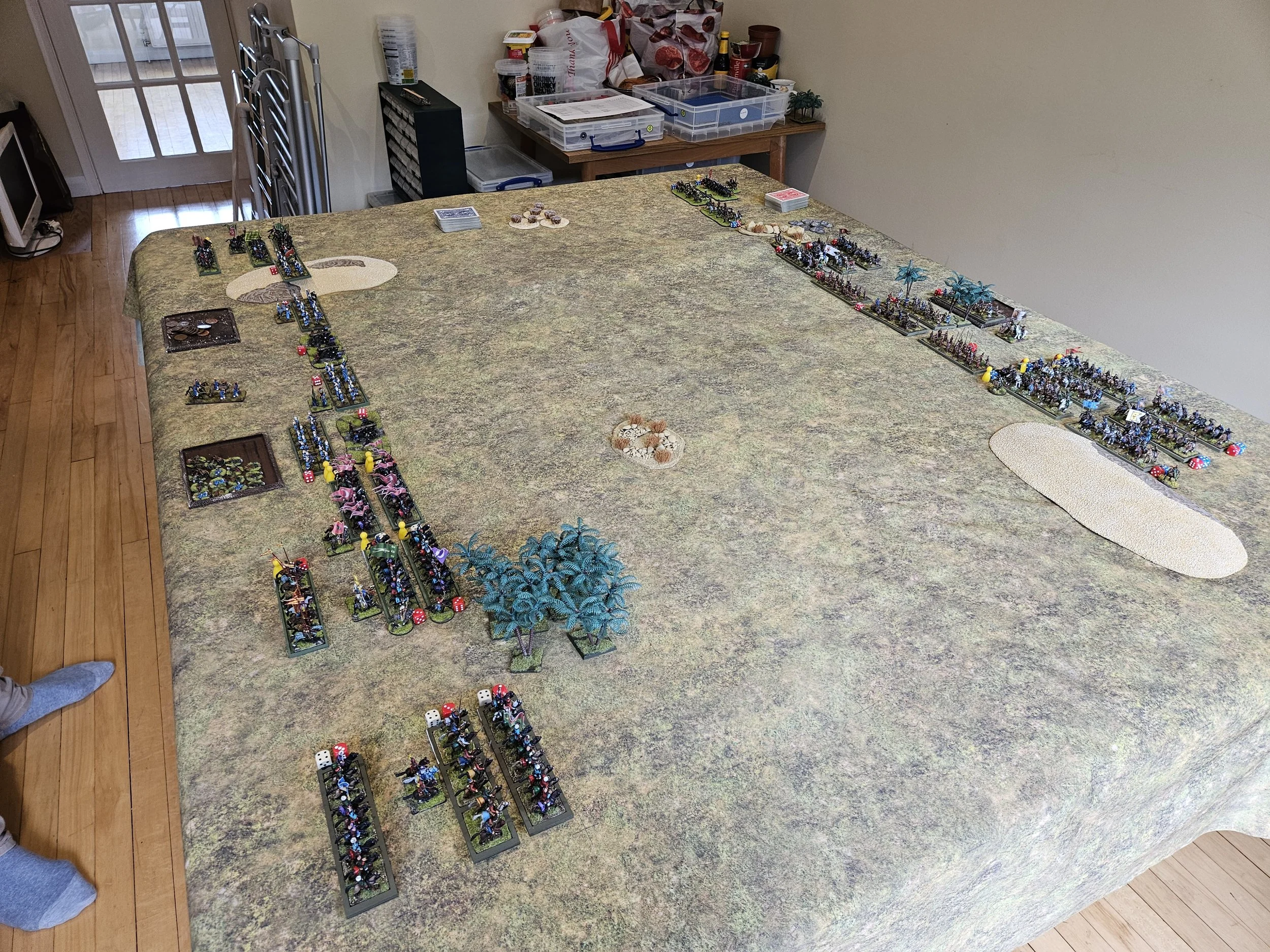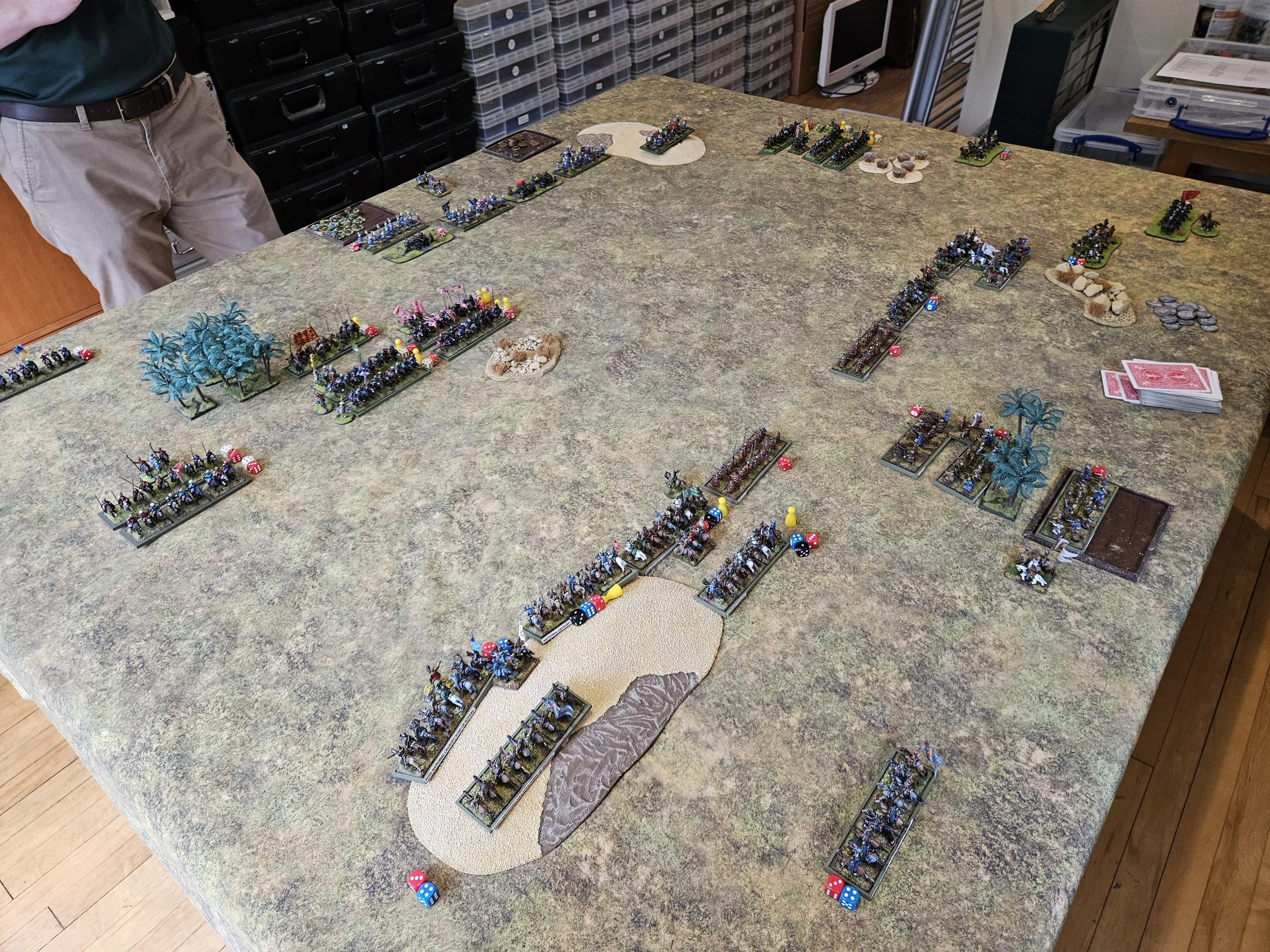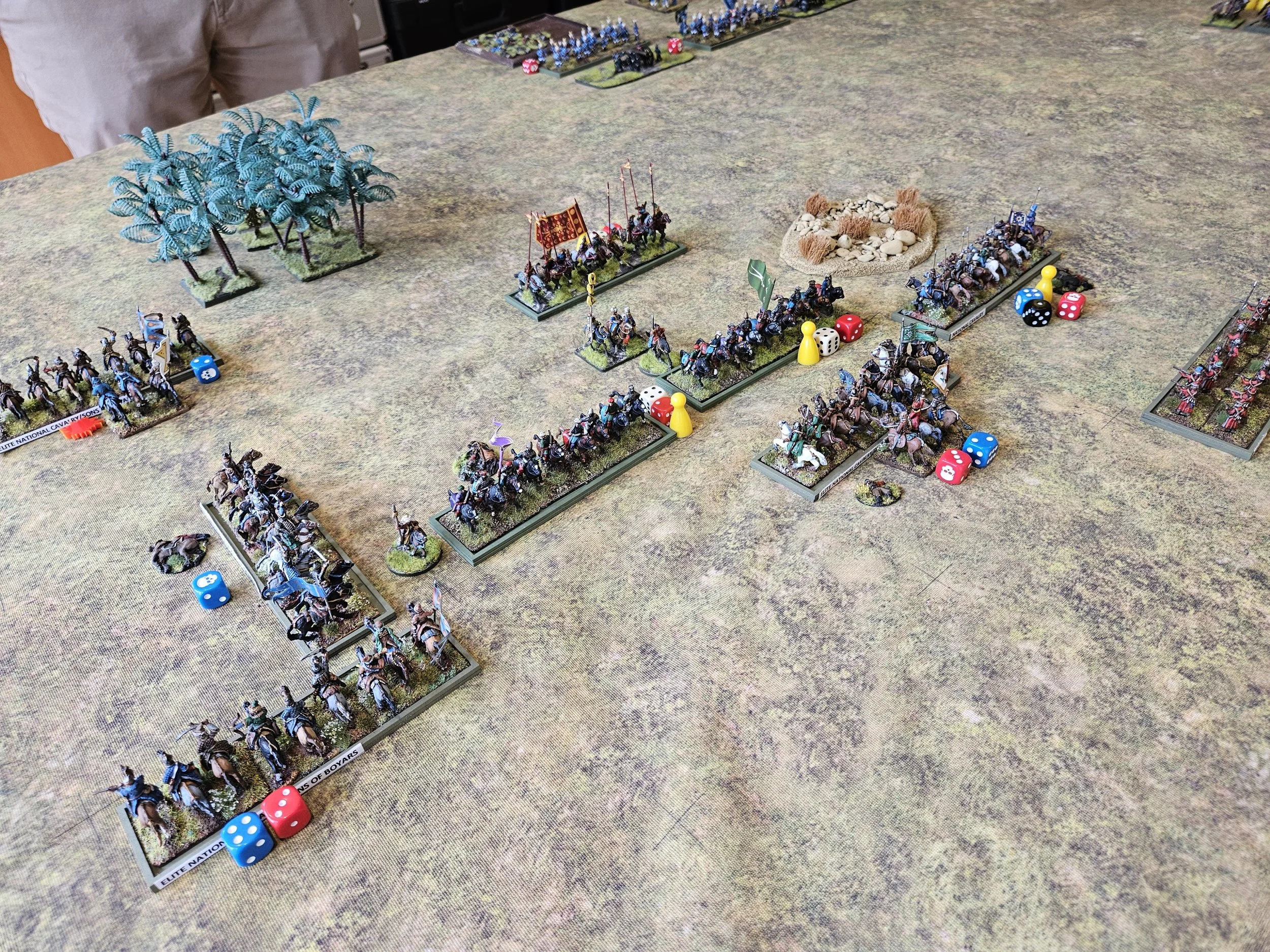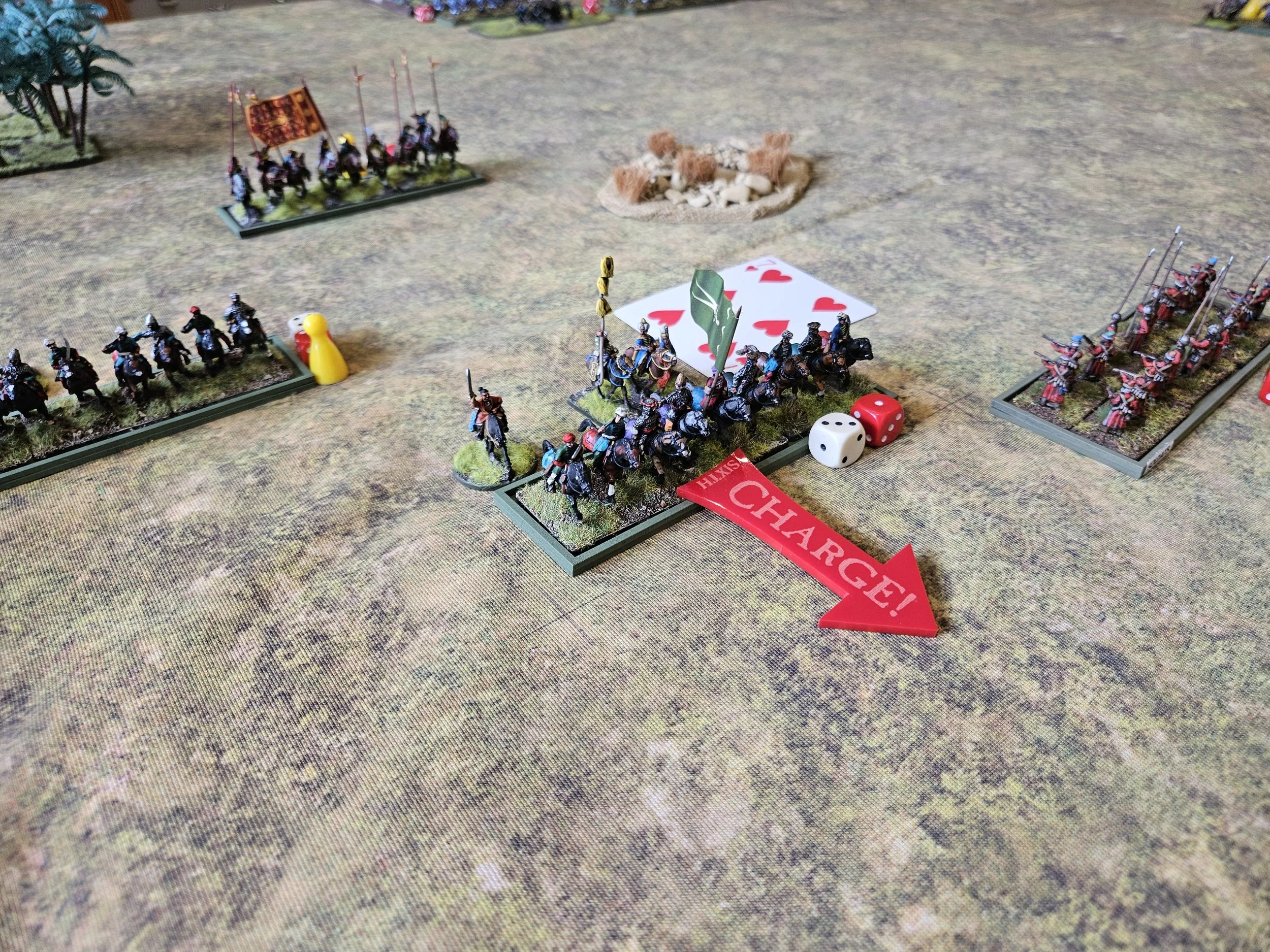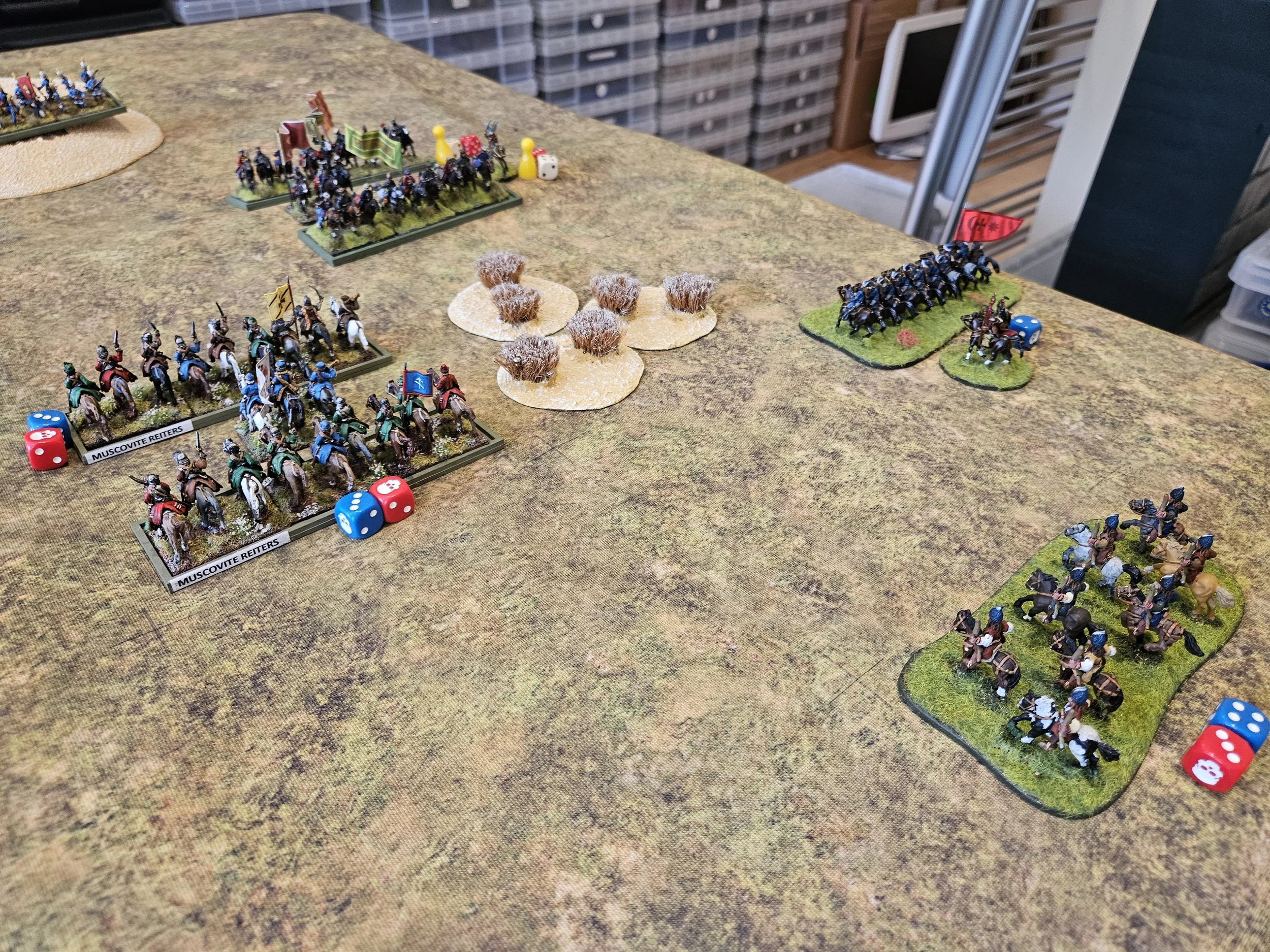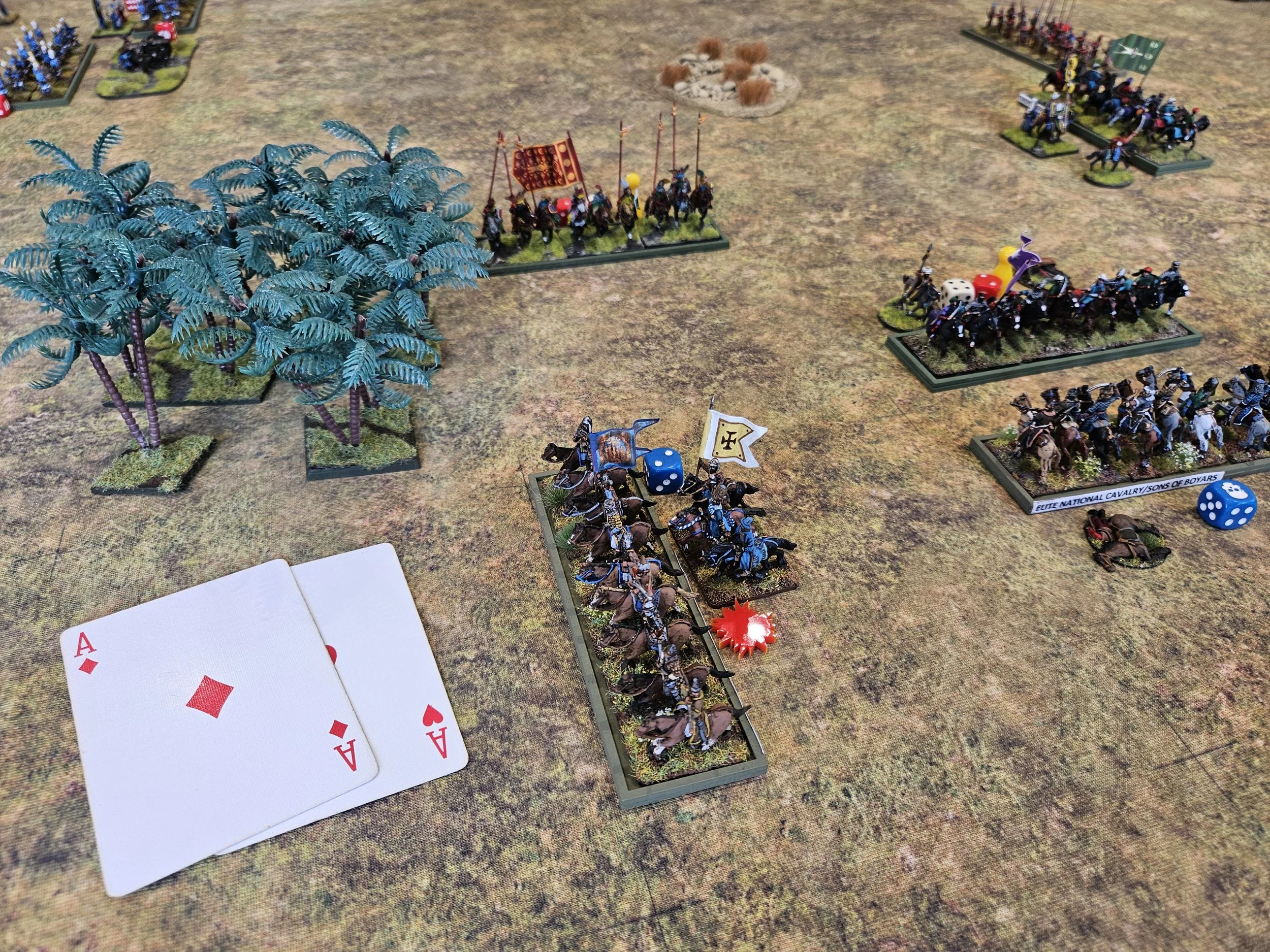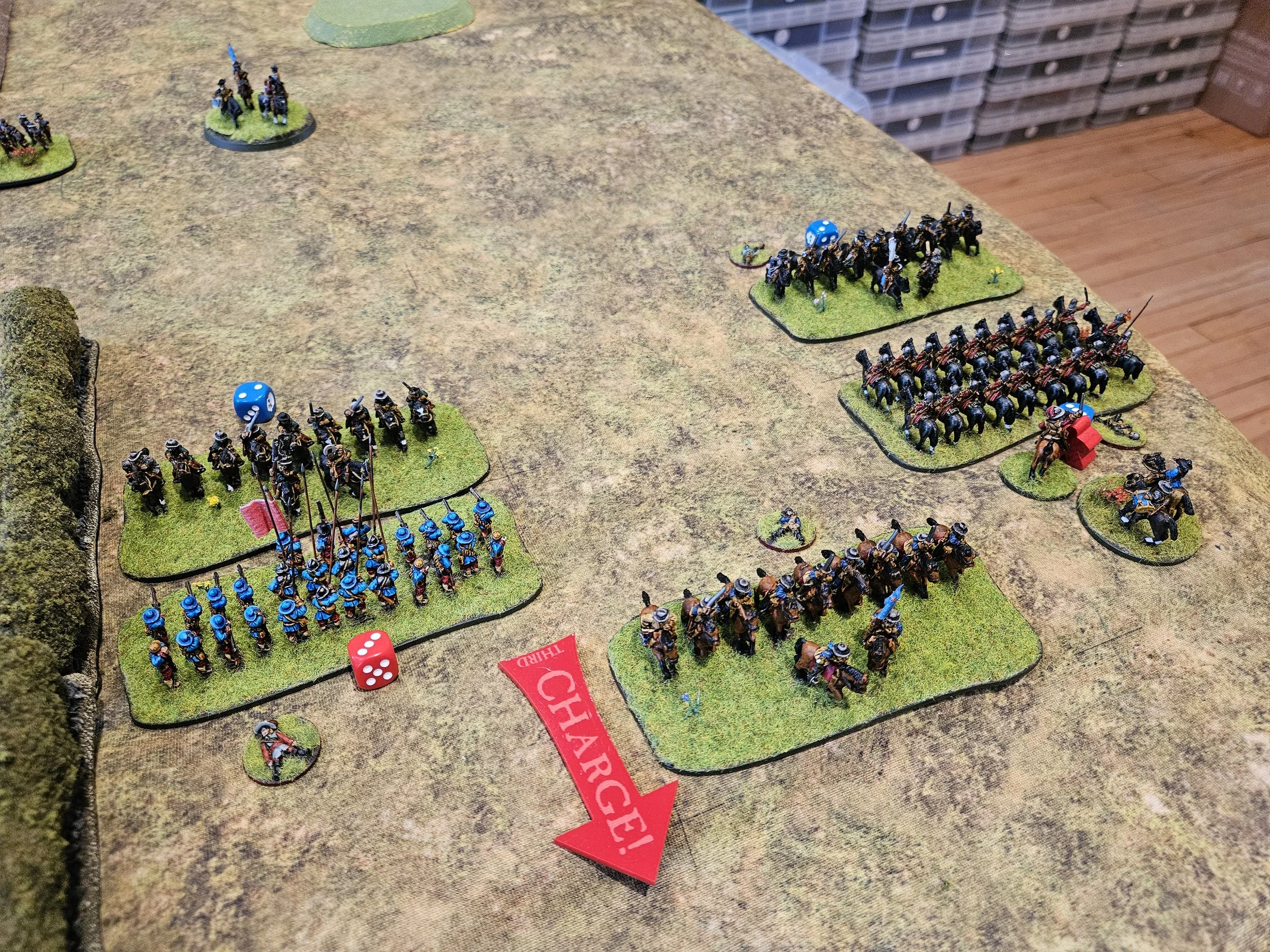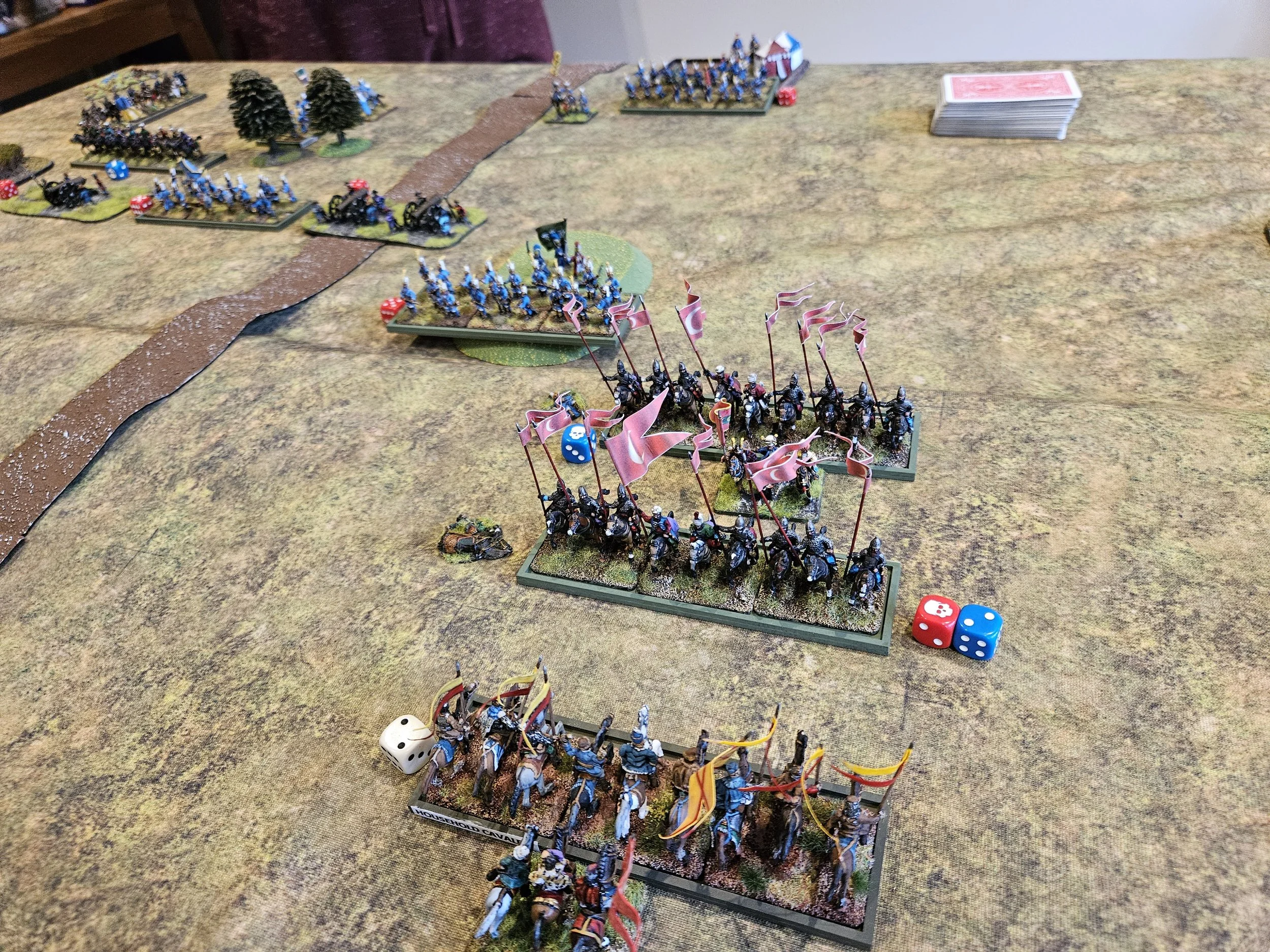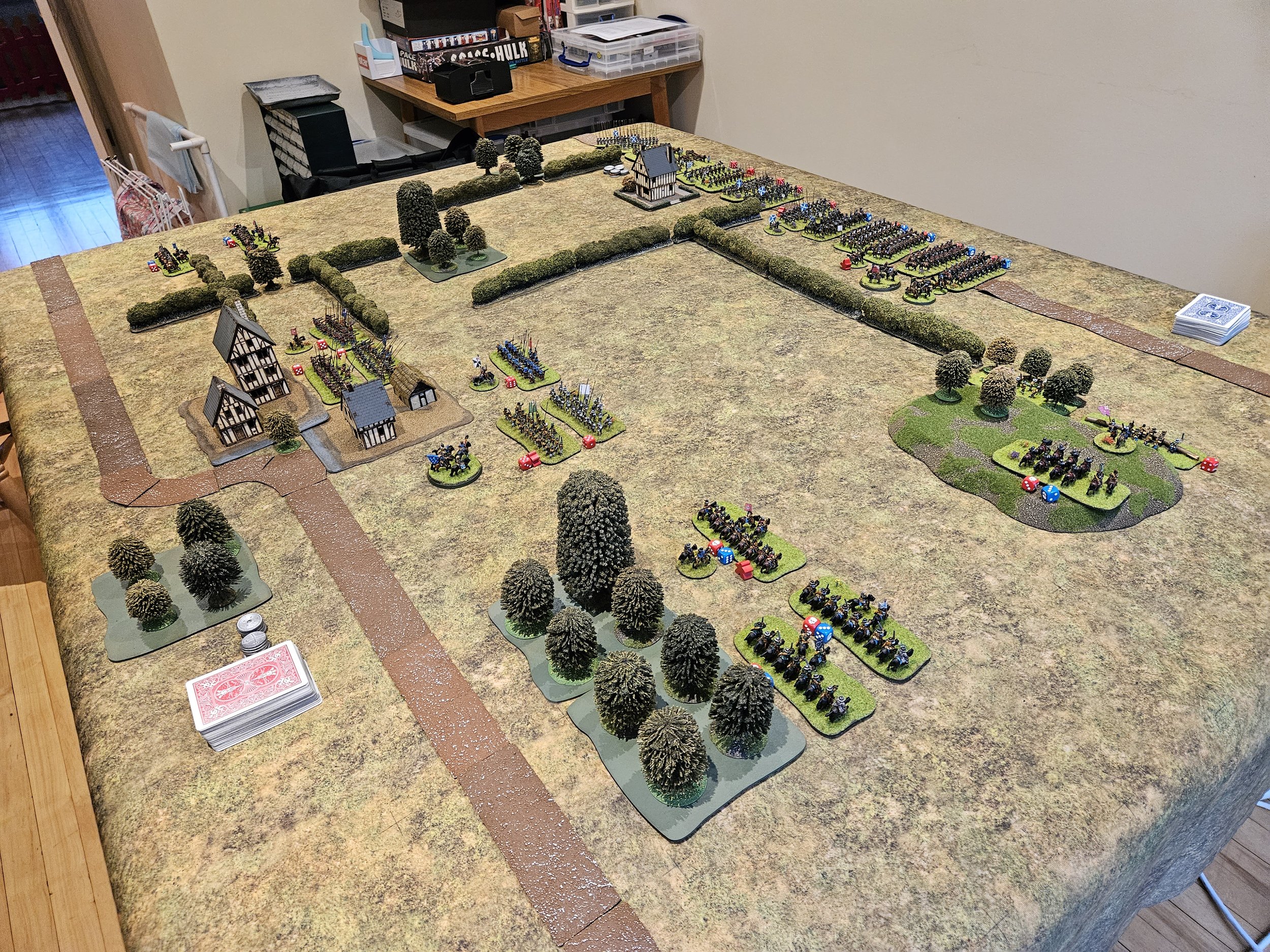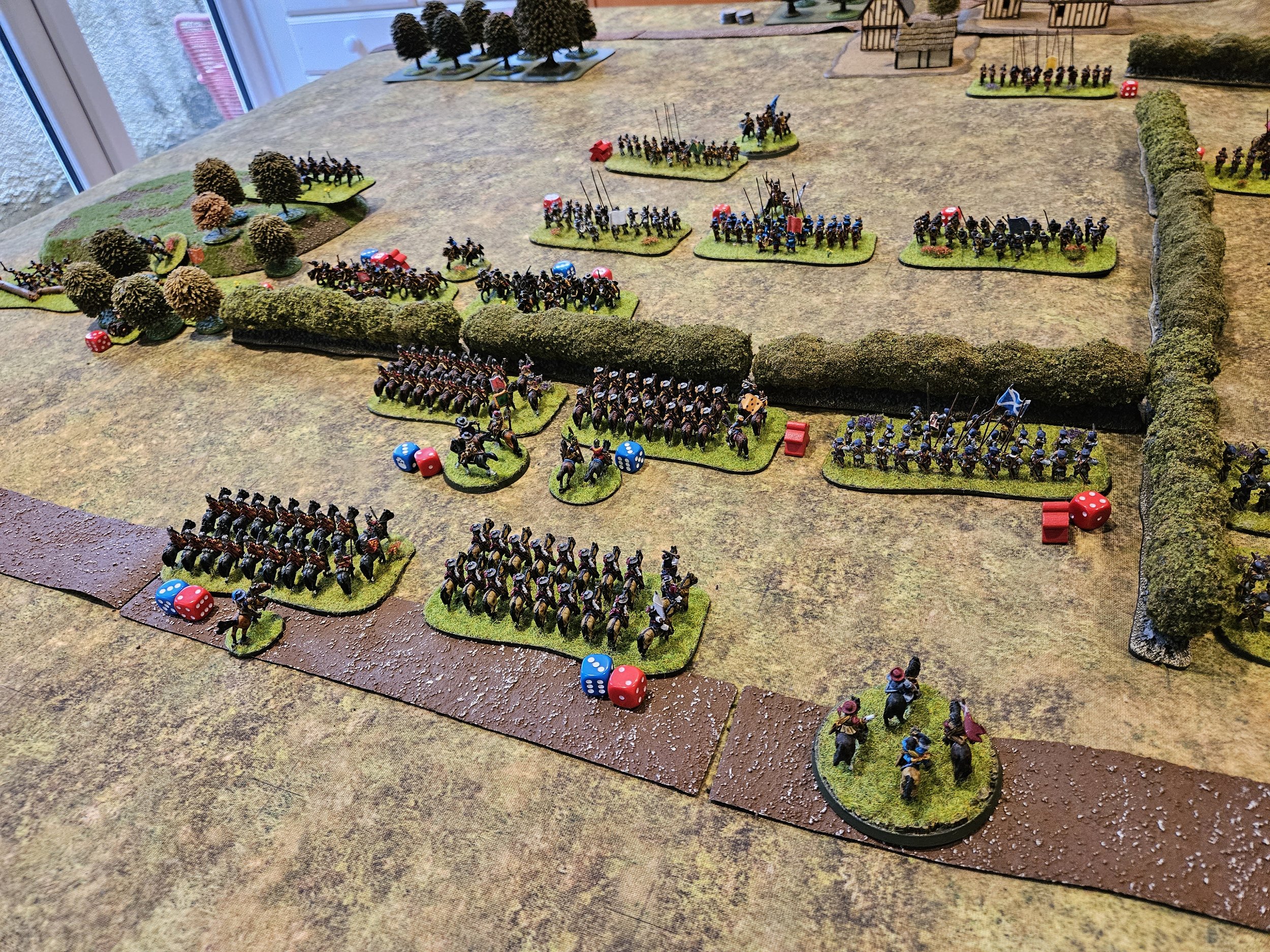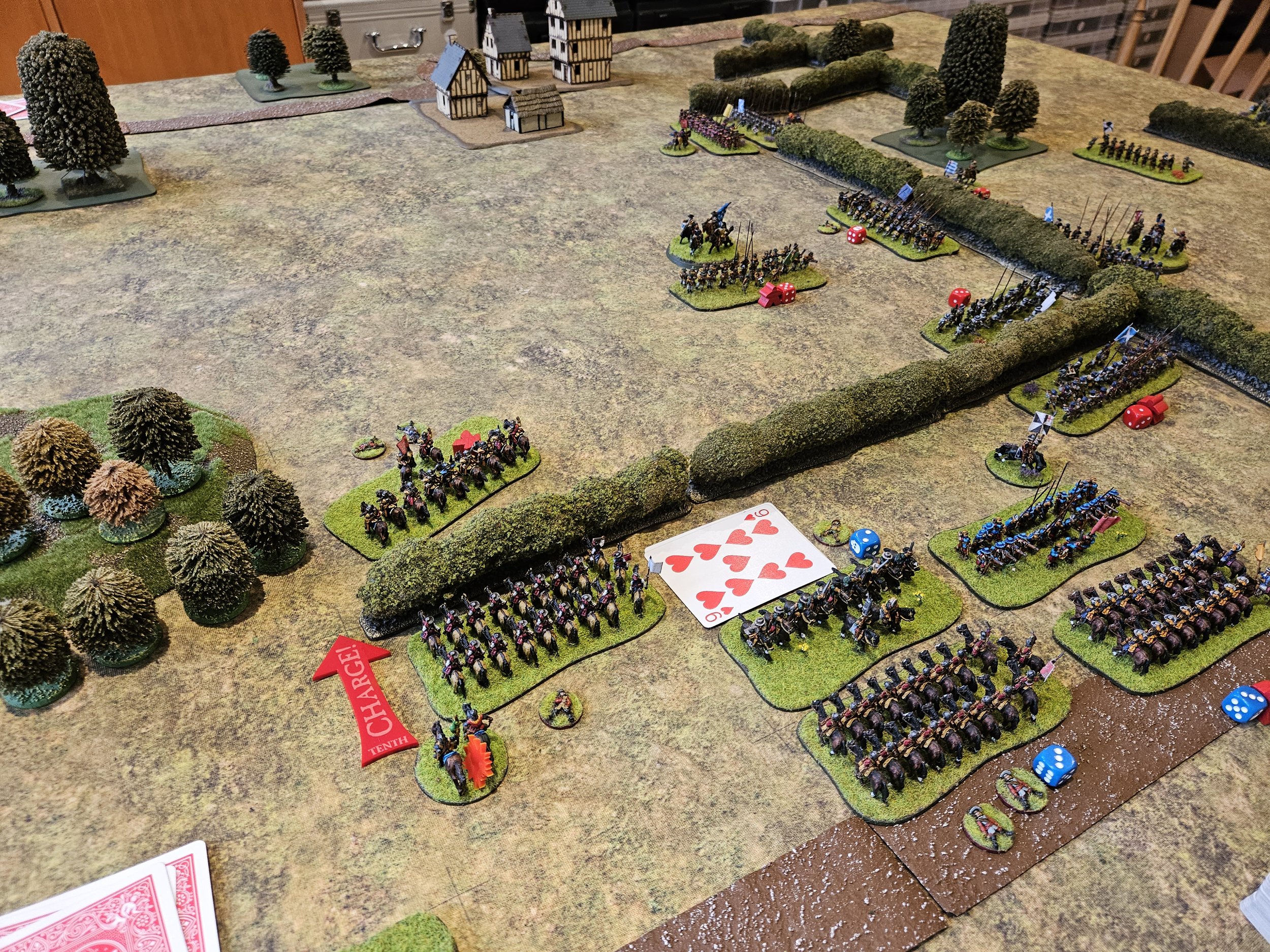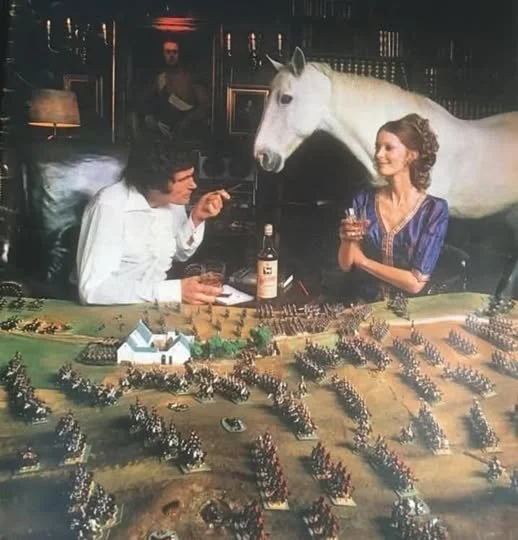FK&P AAR: Polish-Lithuanians versus Transylvanians
/Time to get my new Winged Hussars onto the table for the first time. I would command the Polish-Lithuanians versus other-Rob’s Transylvanians.
My plan was simple: as I reckoned that my troops were better than his man-for-man, I would advance into contact and defeat each individual enemy unit that my men encountered. There was a little bit of detail involved: I would try and get my German infantry with their pikes into contact with the Transylvanian infantry without pikes; and I would try and loop one command of Hussars around the Transylvanian light cavalry on the far right of my line. Otherwise, it was just forward at the double!
My deployment was not strong, however, and my first few turns were spent trying to sort out my troops and get them where I wanted them. In the picture, below, you’ll see that although my German foot are where I want them, the Hussars are still deploying into a line as huge mass of Transylvanian cavalry head towards them.
Forward at the double!
The two lines came together with an almight crash: toe-to-toe literally right across the battlefield.
My German infantry exchanged a couple of volleys with the various Transylvanian types on the other side, then charged in with their pikes. Unfortunately, despite my strong belief that they should have swept all before them, the Germans soon got bogged down in a protracted melee-come-firefight where neither side could get the advantage.
German foot making no headway!
Likewise with the cavalry. Despite their technical superiority, the Winged Hussars failed to smash straight through the opposition, and a swirling melee broke out, with the Transylvanian Household Cavalry proving their equally elite status to be a match for the Poles.
As for curving round the pesky lights at the end of the line, they evaded backwards from the Hussars’ charge, effectively tying up two of my best units for the rest of the game.
Hussars failing to break through!
Meanwhile, on the left, my Tatar allies, backed up by some Polish Dragoons, were keeping some more Transylvanian lights occupied.
Tatars hold the left
So the Poles were now fully engaged right across the line, not bursting through as I had hoped but perhaps now gaining a slight advantage. What, however, was somewhat worrying was that there seemed to be another line of enemy cavalry and infantry behind the first one, ready to take me on even if I did achieve initial success.
Why do the transylvanians have another line of both infantry and cavalry in reserve!!
Finally the Hussars just right of centre managed to break through the first line of enemy cavalry, but they were quickly engaged by the second line of Transylvanian horse…and apprently taken off guard as they evaporated under attack!
Not only this, but the Hussars driving back the Transylvanian light horse on the far right were now in danger of getting swamped by the nimble lights, who were making the most of their superior numbers!
Meanwhile, on the left, although the Tatars had managed to dispose of the majority of the Transylvanian light horse in front of them, they then had to retreat as the enemy brought up his reserve infantry. This freed the remainder of the enemy light cavalry to hit the Germans in the flank, turning what had been a bloodily inconclusive fight in the center of the field into a rout!
Fortunately I had reserves of my own I could deploy: a squadron of Petyhorsy and a squadron of Pancerni.
These I sent in to support the crumbling Hussars, but unfortunately their initial success was then wiped out by the last uncommitted unit of Transylvanian Household Cavalry, which charged the Petyhorsy at their moment of victory, sending them and any hope I had of victory flying from the table!
So a pretty horrible defeat for the Poles, mainly due to the fact that Rob, my opponent, had a good plan and executed it brilliantly, and I didn’t have any sort of decent plan and even executed that badly as well!






















